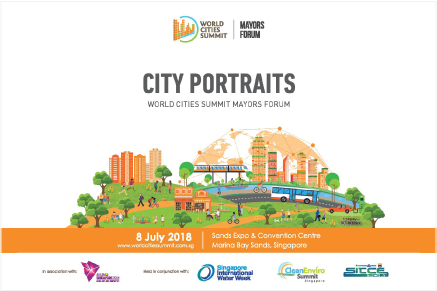Home >
ABOUT US >
Past Editions >
World Cities Summit 2018
World Cities Summit 2018
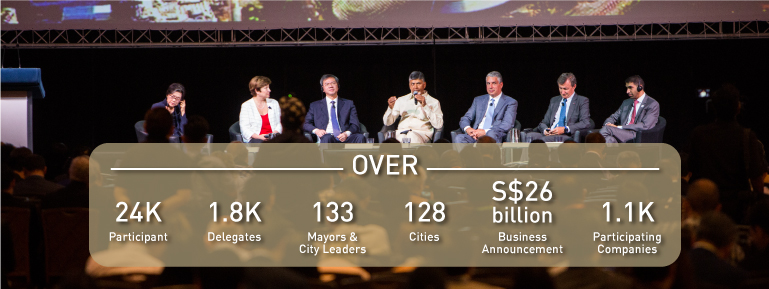
The 6th World Cities Summit (WCS) was held in Singapore from 8–12 July 2018 and took stock of rising urbanisation under the theme “Liveable & Sustainable Cities: Embracing the Future through Innovation and Collaboration”. These challenges are gaining urgency in the face of disruptive technologies and against the backdrop of global issues, including climate change and ageing populations. Four main themes—Governance, Planning, Resilience and Innovation—framed the sharing of common problems, best practices and policy options.
Cities can work towards tackling urban, water, environment and transport management issues as an integrated whole by implementing circular economy principles such as more intensive reuse and recycling. To pay for all the works that need to be done, cities will also have to be innovative with their financing options.
Delegates highlighted the transformative changes disruptive technologies can bring to almost all aspects of society, including new modes of business, communication and transport, not to mention industry churn and job losses, and the re-skilling of the workforce. Making cities more ‘people-centric’ has been a major recurrent theme of the WCS. This call was further advanced with the proposal to add a fourth “P” (people) to the term “3P” (public-private partnership). Such advocacy for greater people participation is aligned to global trends such as the rise of an increasingly active and vocal citizenry.
Key insights:
- To address technological disruptions, cities should enhance their planning and urban governance approaches to meet the urgent need for innovation, and even to reorganise society in some ways.
- Citizen participation and collaboration is now more vital than ever to harness the benefits of digitalisation and to implement urban solutions in a more integrated way.
- To nurture a societal culture of experimentation and reinvention, city governments should engage, and allow more space to citizens and entrepreneurs.
- To enhance resilience, especially social resilience, cities need a new planning paradigm for a more inclusive people-oriented city.
- Cities can seek out innovative new ways to extract revenue and value from existing resources, and also look to other cities for ideas to finance infrastructure.
- Harnessing a city’s assets, especially culture and nature, can add much to its capacity for resilience and for collaboration to boost sustainability and liveability.
MAYORS FORUM
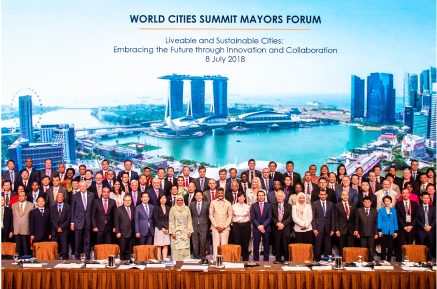
Embracing disruptive innovations and financing infrastructure topped the agenda of the 9th WCS Mayors Forum. Delegates explored how liveable cities could learn and adopt new technologies and find more sources to fund infrastructure projects.
Globally, there is a renewed call to embrace innovation with fresh mindsets ready for experimentation and adaptation; to reimagine the city as a living laboratory to try out new ways of building a city. For cities to nurture and embrace innovation, the mayor’s role must go beyond addressing municipal issues to telling a new and inspiring story about the future of the city, persuading citizens to buy into the benefits of adapting to technological change and participating more in shaping development.
Cities must re-examine their financing options beyond traditional taxation, adapting to marketplace shifts such as the rise of the virtual economy with new players like online taxi services. As city governments and commercial players enter into closer partnerships, they must work harder to win the trust of citizens so that, together, the city can present a more integrated and attractive case for private sector investment.
View Mayors Forum 2018 ReportLEE KUAN YEW WORLD CITY
PRIZE LAUREATE CITY: SEOUL
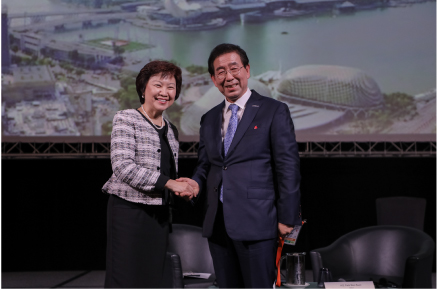 Seoul was awarded the 2018 Lee Kuan Yew World City Prize. South Korea’s capital is recognised as the role model for megacities with a will to change. Seoul has successfully turned itself around from a bureaucratic top-down city with rising tensions between the government and its people, into one that is inclusive, socially stable and highly innovative.
Seoul was awarded the 2018 Lee Kuan Yew World City Prize. South Korea’s capital is recognised as the role model for megacities with a will to change. Seoul has successfully turned itself around from a bureaucratic top-down city with rising tensions between the government and its people, into one that is inclusive, socially stable and highly innovative.
With its successful and impactful high-quality projects to repurpose urban infrastructure, Seoul has proven itself to be an excellent example of a city where leadership, commitment to citizen engagement, data-supported problem-solving decisions, and creative designs can transform the built environment, add vibrancy and improve quality of life.
YOUNG LEADERS SYMPOSIUM
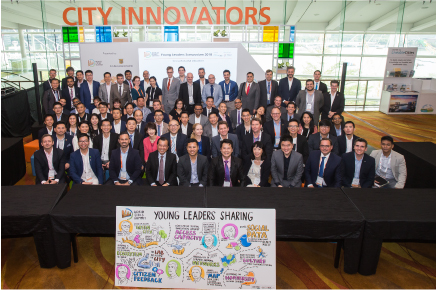
This year’s Symposium focused on innovation and disruption in the public, private and people sectors. Selected Young Leaders shared how they harnessed innovation in their areas of expertise.
Key observations:
- Working with partners not only enables constant innovation, but also innovation at scale. Technology platforms can allow smaller, more agile companies to showcase their capabilities and innovative ideas that larger companies, government agencies and non-governmental organisations can tap.
- Working with people is crucial for the success of any plan. Young Leaders discussed a host of methods—from using digital technologies, to creating urban living labs and building cycling facilities as well as skyparks and underground links—for better transportation planning and promoting active mobility.
- A light regulatory approach and the creation of “sandboxes” will allow companies to experiment and for people to experience and embrace innovation and disruption.
THEMATIC TRACKS
Urban Governance Session 1: Can Good Governance Prepare Cities for Disruptive Innovations?
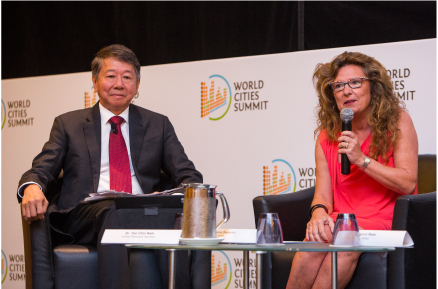 With an increasingly volatile and uncertain global environment, public leadership will need to adapt quickly to fast-changing circumstances. Exacerbated by an increasingly active and vocal citizenry, governments need to be pragmatic, lead with a clear vision and collaborate with the private and public sectors to co-create solutions for more liveable cities.
With an increasingly volatile and uncertain global environment, public leadership will need to adapt quickly to fast-changing circumstances. Exacerbated by an increasingly active and vocal citizenry, governments need to be pragmatic, lead with a clear vision and collaborate with the private and public sectors to co-create solutions for more liveable cities.
Key observations:
- Smart City initiatives can bring many benefits to citizens, including technologies that enhance decision-making to reduce threats such as traffic accidents and crime.
- To sustain citizen participation, cities can adopt measures including decentralisation, participatory budgeting and concerted efforts to promote local identity.
- Embracing diversity is vital for cities to boost innovation and enhance resilience.
- Cities can deal with disruptive innovations better if the public and private sectors share risks to a greater degree.
Urban Governance Session 2: Let’s Talk About Money: How Will Cities of the Future Be Financed?
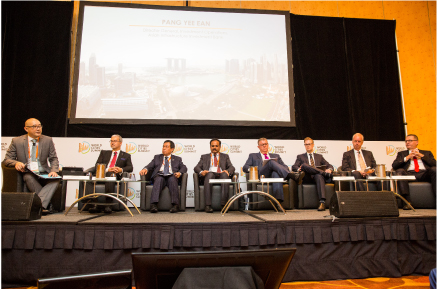 Financial resources are the crucial ingredient to turn masterplans into reality. How can city leaders work better with investors, capital markets and stakeholders to tap into innovative resources and alternative models of urban financing and investment?
Financial resources are the crucial ingredient to turn masterplans into reality. How can city leaders work better with investors, capital markets and stakeholders to tap into innovative resources and alternative models of urban financing and investment?
Key observations:
- Involving the private sector early in major projects allows companies to prepare in advance and helps to create economic opportunities for citizens.
- Transparency and predictability are key to unlocking private investment. Governments need to manage political risks to win investor confidence in projects.
- Governments need to anticipate the possibilities of new technologies and figure out ways to monetise their benefits since they may not be taxable in traditional ways.
Planning Session 1: They Say “Old Is Gold”, But Is It Really? Urban Regeneration Through Integrated Planning
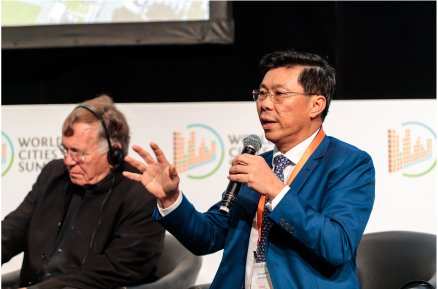 Rejuvenating distressed urban areas in a holistic manner requires the integration of social, economic and environmental considerations into planning efforts. How can innovative systems and technologies help governments make more informed planning decisions?
Rejuvenating distressed urban areas in a holistic manner requires the integration of social, economic and environmental considerations into planning efforts. How can innovative systems and technologies help governments make more informed planning decisions?
Key observations:
- Development projects can be made more bankable with holistic adjustments catering to the different needs of urban and rural growth.
- City governments should enable the private sector to be more flexible within a stable and more investor-friendly regulatory environment.
- Cities can earn public buy-in, especially on major projects, by engaging citizens with a view to balancing their interests with economic development.
- A new planning paradigm is needed to re-orientate urban regeneration towards creating more liveable and sustainable cities via healthy and elderly-friendly aspects.
Planning Session 2: Can We Create Inclusive Communities Through Master Planning?
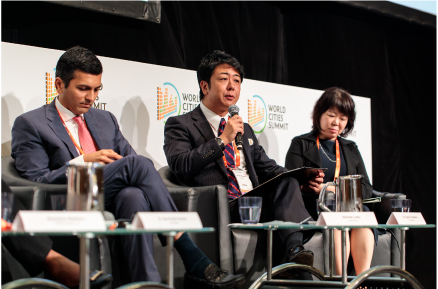 As urbanisation continues apace globally, cities are increasingly becoming hubs of diverse communities. How can planning and development make cities more inclusive?
As urbanisation continues apace globally, cities are increasingly becoming hubs of diverse communities. How can planning and development make cities more inclusive?
Key observations:
- Building inclusive communities starts with gathering data for formulating policies.
- People-oriented event programming encourages communities to take ownership and work with agencies to promote neighbourliness and eco-friendly living.
- Fostering community relations within a neighbourhood is more conducive when affordable housing is well-designed, of high quality and with active community spaces that are inclusive for children, the elderly and the disabled.
- Building plans must be adaptable to changes in the cycle of people’s lives.
- Urban planning and design must be simplified so that citizens can understand them and play a greater part in shaping their cities and hold their leaders to account.
Resilience Session 1: What Does It Take to Be an Environmentally and Economically Resilient City?
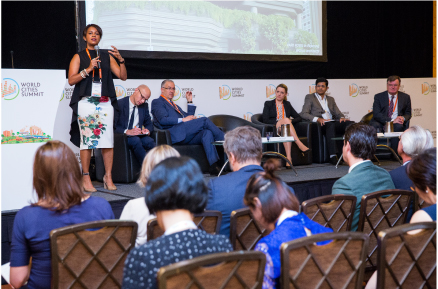 A resilient city continuously learns from its past experiences as well as from others and takes an integrated and holistic approach that will allow it to respond, adapt and recover. What should cities do to ensure that they can quickly recover from shocks and even take advantage of new opportunities arising from threats such as climate change?
A resilient city continuously learns from its past experiences as well as from others and takes an integrated and holistic approach that will allow it to respond, adapt and recover. What should cities do to ensure that they can quickly recover from shocks and even take advantage of new opportunities arising from threats such as climate change?
Key observations:
- Urban resilience can be built through preventive actions to anticipate and mitigate current and future challenges.
- Physical resilience requires leadership in assigning city budgets to key initiatives such as managing coastal infrastructure against natural disasters and climate change.
- Economic resilience requires building up skills to prepare the people for workplace changes and job displacements due to the adoption of new technology.
Resilience Session 2: Social Resilience: A Critical Component of a Liveable and Sustainable City
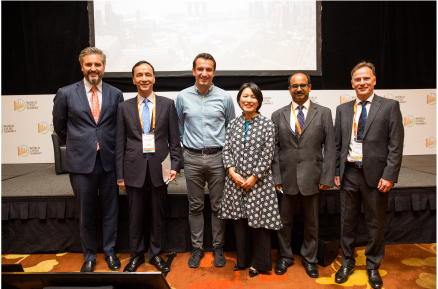 Chronic stresses such as rising socio-economic disparities, rapidly ageing populations and increasing diversity will impact the way cities plan and progress. How can the social aspects of planning for resilience—raising awareness, promoting collaboration, empowering communities through capacity building and engagements—be further cultivated?
Chronic stresses such as rising socio-economic disparities, rapidly ageing populations and increasing diversity will impact the way cities plan and progress. How can the social aspects of planning for resilience—raising awareness, promoting collaboration, empowering communities through capacity building and engagements—be further cultivated?
Key observations:
- Cities can do more for the welfare of all citizens—from small children to the elderly—and promote sports for better health and greater social cohesion.
- Social resilience is about setting the right priorities. Urban projects can be more inclusive across generations and building types, such as mixed-use developments for multi-generation living, and nursing homes built next to schools.
- Cities need to challenge social perceptions about the elderly to see them as a resource rather than a liability, and to empower them as decision-makers.
Innovation Session 1: Disruptive Innovations: A Bane or Boon for Cities?
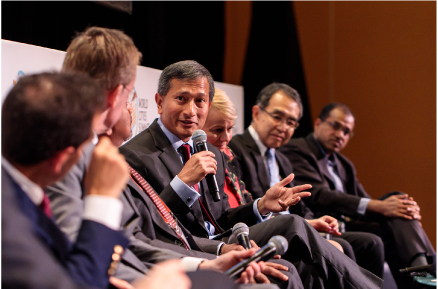 Cities around the world are riding the wave of technological advancement to create future-ready urban solutions tailored to their development needs. What structures and processes do cities require to readily embrace disruptive innovations?
Cities around the world are riding the wave of technological advancement to create future-ready urban solutions tailored to their development needs. What structures and processes do cities require to readily embrace disruptive innovations?
Key observations:
- Society can be re-engineered as a “living lab” for innovation; city governments must break silos and deliver integrated services in more citizen-centric ways.
- How well people adapt to changes brought about by technology depends on public trust; good communication can help governments earn trust.
- As society embraces more technology, cities must protect consumers’ rights and privacy and manage workplace transitions by funding and facilitating skills training.
Innovation Session 2: Does Public-Private-People Collaboration Yield the Best Social Innovations?
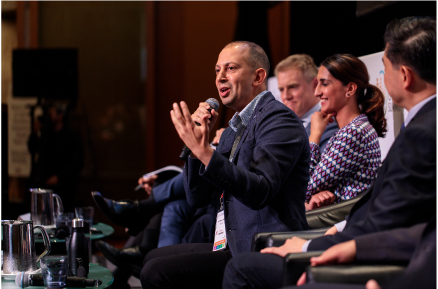 The rise of social innovation labs in recent years has encouraged new forms of cooperation between the people, public and private sectors. How can local governments work with businesses, research institutions and citizens to create a healthy ecosystem that enables innovative solutions to thrive in cities?
The rise of social innovation labs in recent years has encouraged new forms of cooperation between the people, public and private sectors. How can local governments work with businesses, research institutions and citizens to create a healthy ecosystem that enables innovative solutions to thrive in cities?
Key observations:
- Do not overlook easier solutions that can be built by optimising existing infrastructure and reducing resource costs.
- Pitch the benefits of new technologies clearly to foster greater public buy-in.
